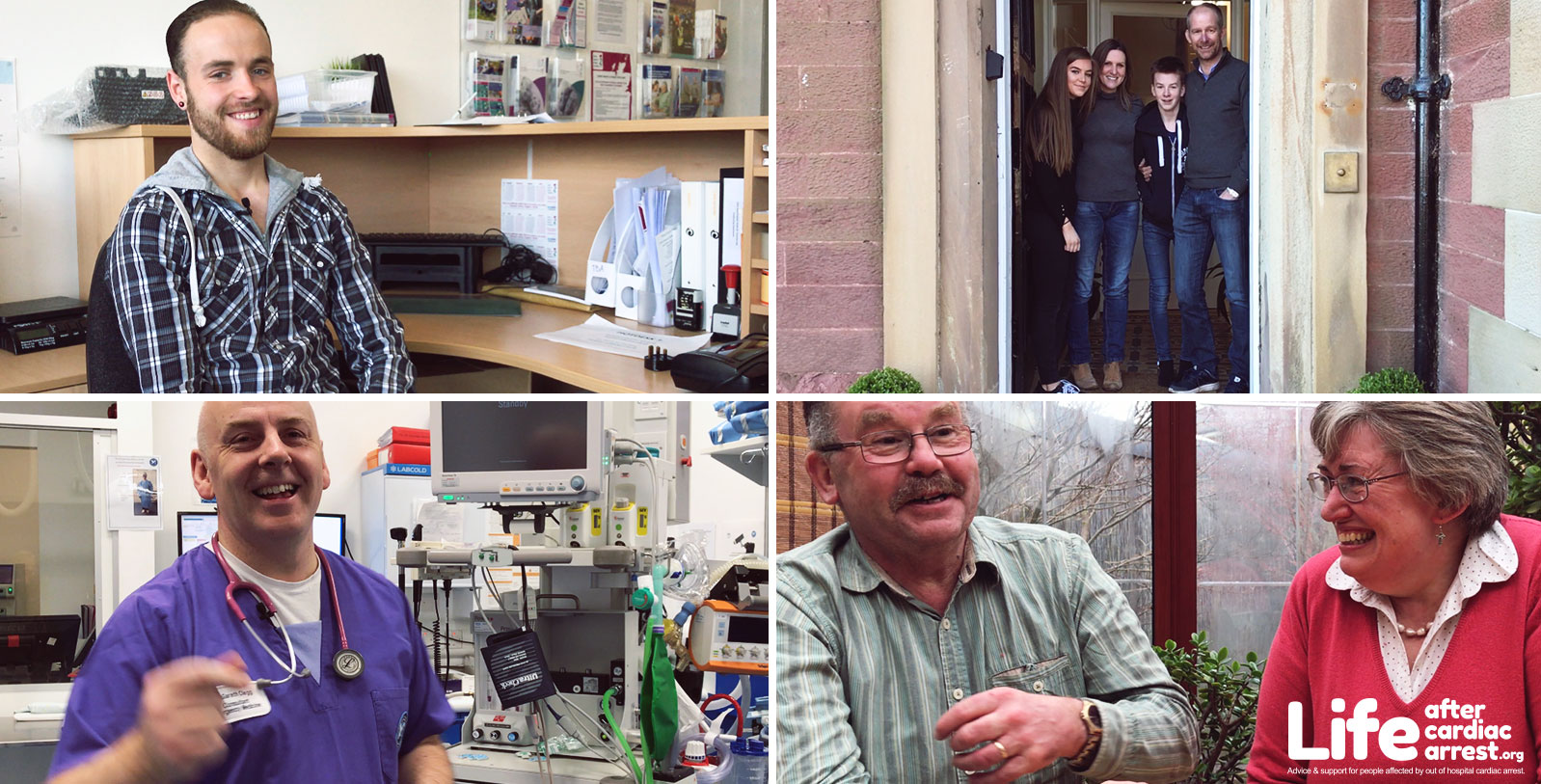The making of Life After Cardiac Arrest
The project leads from Chest Heart & Stroke Scotland (Caitrian Guthrie) and The University of Edinburgh (Stuart Brett), provide insight into how the Life After Cardiac Arrest resource was developed.
The OHCA strategy for Scotland
People who have survived an out of hospital cardiac arrest (OHCA) and their families need high quality information about their underlying condition and the potential physical, psychological and social impact of cardiac arrest.
Scotland launched its Out of Hospital Cardiac Arrest Strategy in 2015, aiming to improve outcomes after out of hospital cardiac arrest and to make Scotland an international leader in the management of OHCA by 2020.
- Out of Hospital Cardiac Arrest: A Strategy for Scotland (PDF 5.9 MB, 2015)
- Out of Hospital Cardiac Arrest: A Strategy for Scotland Review (PDF 4.2 MB, 2016)
One aim of the Scottish strategy is to ensure that post event care and support is available to patients and their families/carers after OHCA. This includes those bereaved by OHCA. With this aim in mind, the resource content has been designed to:
- Increase awareness and understanding of the potential physical, psychological and social consequences of OHCA on those involved.
- Help people to recognise their aftercare and rehabilitation needs following an OHCA.
- Provide information to support individuals and to sign-post them to appropriate services.
- Provide a one-stop directory of resources and organisations available to support those on whom OHCA has impacted.

The people behind Life After Cardiac Arrest
The most important people behind the website are those who have been personally affected by an OHCA and we have involved them at every stage in building the website.
Chest Heart & Stroke Scotland was commissioned by Scottish Government to speak to survivors of OHCAs and their families and find out what their experiences of aftercare and rehabilitation had been. A small focus group meeting was held to listen to what the survivors, their families and the bereaved had to say. We also looked at available literature and research. What emerged from the focus group and our reading was that people wanted more information, help and support when they or their family member was recovering from an OHCA, or when they were bereaved by an OHCA. As a result, Scottish Government funded Chest Heart & Stroke Scotland to develop an online resource that would be free and easily accessible to the public.
Our organisation has previously developed two very successful public facing websites My Lungs My Life and Self Help 4 Stroke. These were built in collaboration with the Interactive Content Team at the University of Edinburgh. The ongoing success of these collaborations meant the University were an obvious choice when it came to selecting web development partners for our exciting, new project.
Different individuals helped with the project, at different stages in its development. We held an Away Day, with survivors, their families, those bereaved by OHCA, healthcare practitioners and representatives of various public sector and voluntary organisations. This Away Day emphasised the importance of putting those with personal experience at the heart of the website development. A small development group was formed, guided and supported by a Steering Group (please see Acknowledgements for membership of these groups). The development group met several times over the course of the project, to discuss the content and look of the website.
In the website, a number of people who have personal experience tell their stories. They include those who have had an OHCA, members of their families and those who have suffered a close family bereavement due to OHCA. We used personal stories because we wanted to put these at the heart of the website. Stories were either filmed or audio-taped. Each story was reviewed and the main issues and topics identified. Content was then written around these and includes information and links to other useful resources. While the website was being developed, the content was continually being reviewed by those involved in the stories and other relevant people with expert knowledge.
Re-living what had happened was often difficult and emotional for those involved (including those behind the camera and the audio-recorder!) and we are extremely grateful to those who shared their experiences and insights. We hope that we have developed a resource that will be informative and supportive for those people who find themselves in a similar situation.
Filming Life After Cardiac Arrest
The website design and filming of Life After Cardiac Arrest was created by The University of Edinburgh’s Interactive Content team. The University currently develop video-based content that reaches over two million distance learners from across the globe choosing to learn online and engage with their content. They typically film with a small crew and with a lot of equipment. With Life After Cardiac Arrest however, the Interactive Content team employed a different tact and chose to use small-scale, cutting-edge equipment and software that allowed us to film in smaller, more comfortable locations, ensuring the people we spoke to felt relaxed and not intimidated by lights, cameras, cables and boom microphones.
The team filmed all of our interviews on Apple iPhone 7 Plus smartphones attached to Manfrotto Compact tripods and recorded each video via FiLMiC Pro software. Single interviews were recorded with Rode SmartLav+ mics, whereas multiple interviewees were recorded with via a tripod-mounted Rode VideoMic GO microphone. Editing and post production was achieved with Adobe After Effects CC 2017. This method of combining mobile filming with high-end post production provided us with the ability to film practically anywhere and achieve a professional look (all footage was shot in 4K). We filmed up and down the country and in locations that ranged from offices, living rooms and conservatories, to the Clydeside and even within an active accident and emergency cardiac unit. The University would like to thank everyone involved in the making of Life After Cardiac Arrest, and in particular, the people we interviewed and chose to share their very personal experiences for others.


